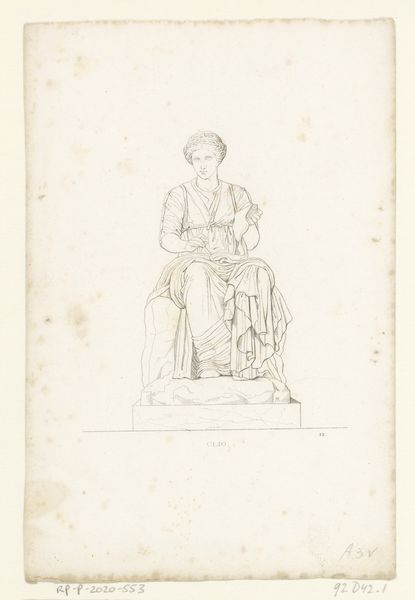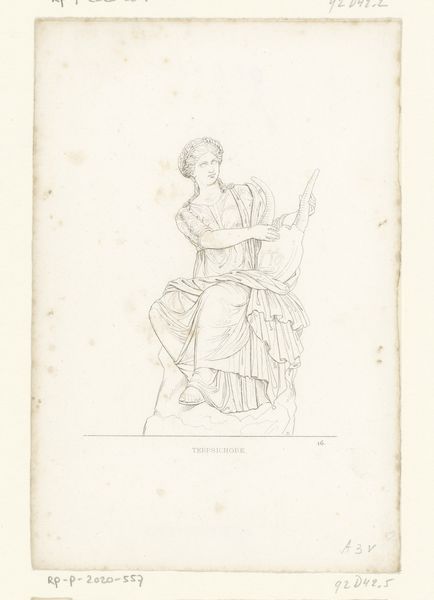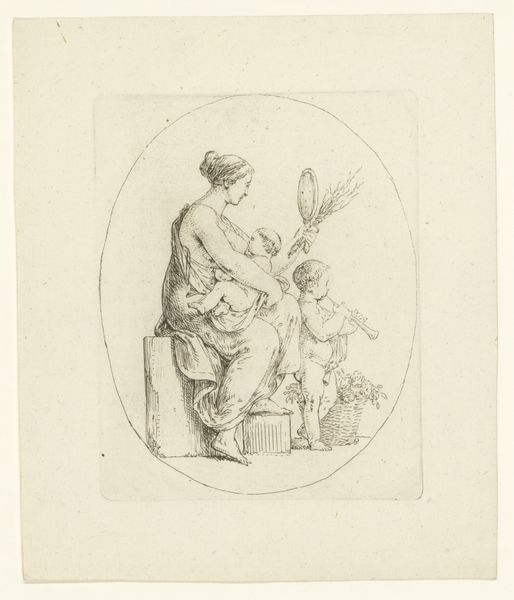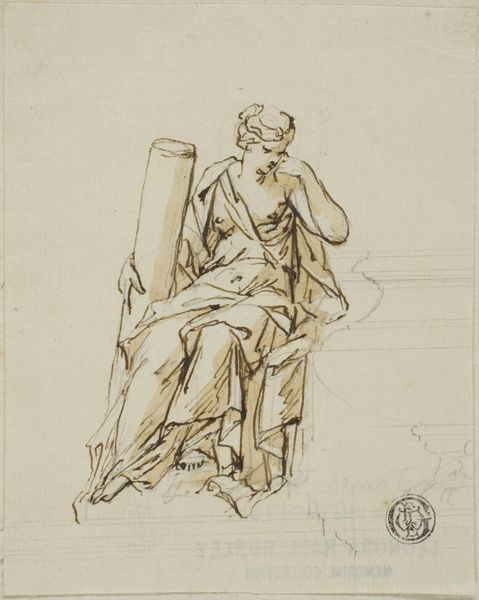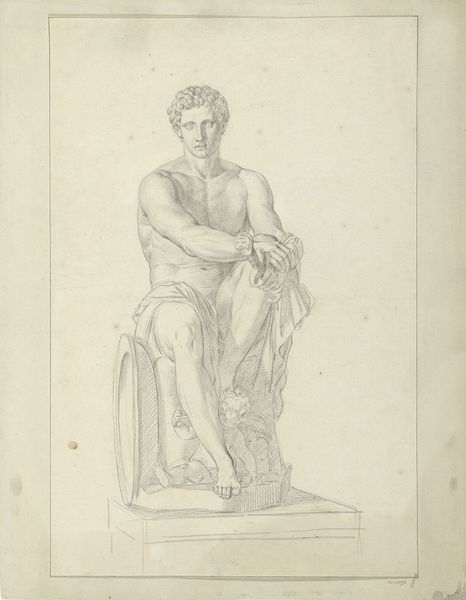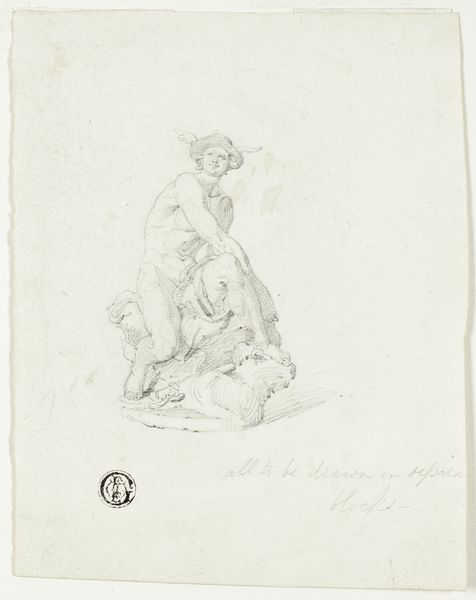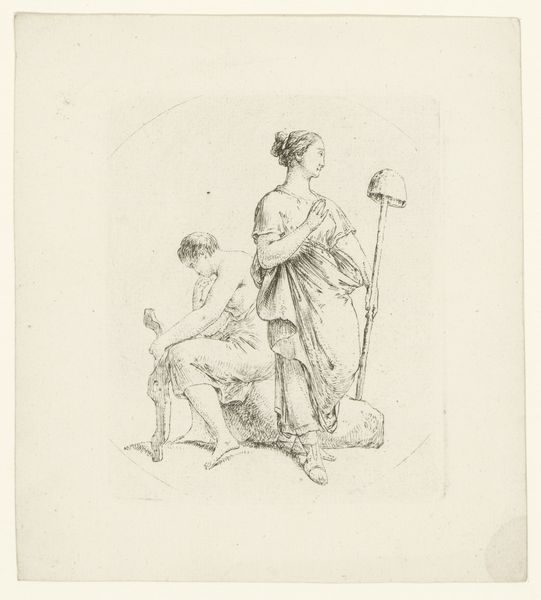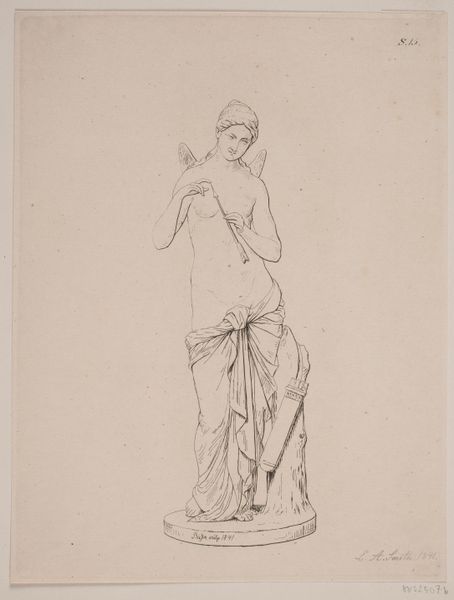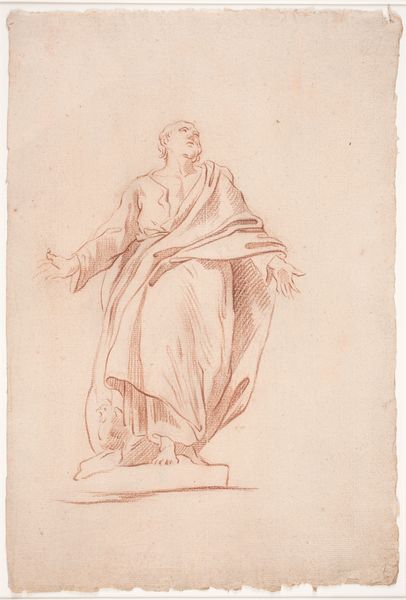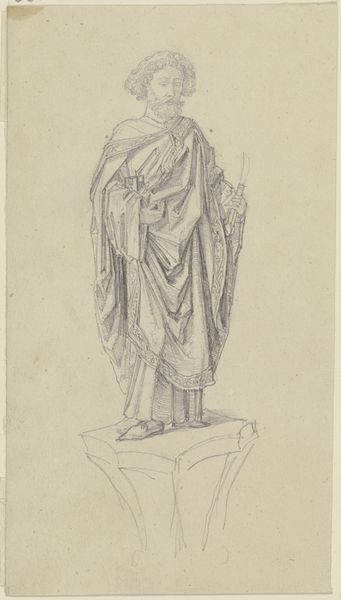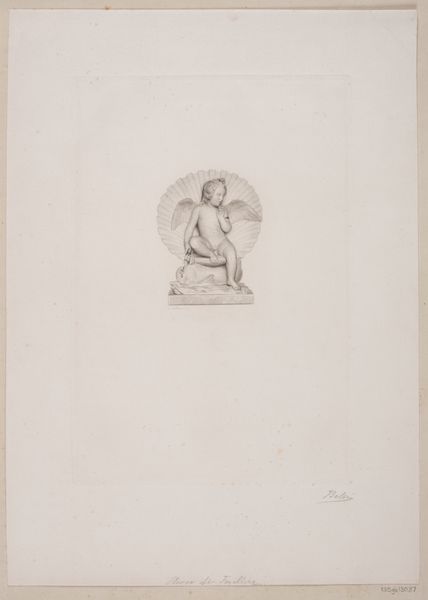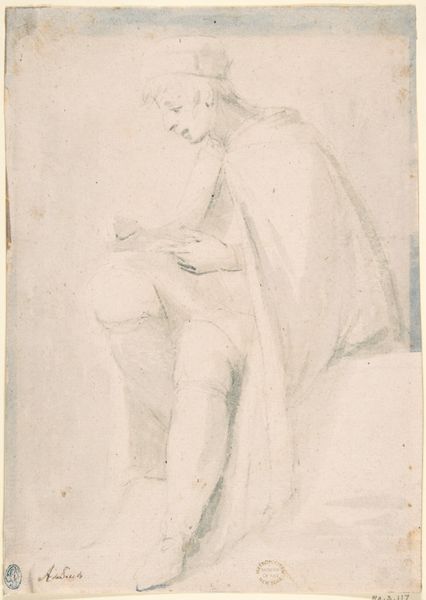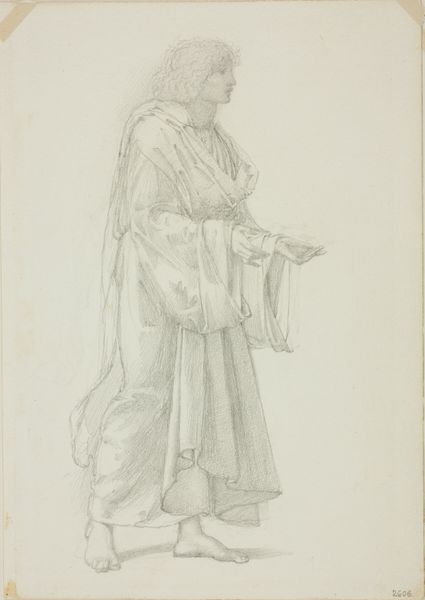
drawing, ink, pencil
#
portrait
#
drawing
#
greek-and-roman-art
#
classical-realism
#
figuration
#
ink
#
pencil
#
academic-art
Dimensions: height 175 mm, width 115 mm
Copyright: Rijks Museum: Open Domain
Curator: This drawing, titled "Kalliope," was created by Etienne Achille Réveil around 1829, rendered in pencil and ink. My immediate sense is one of tranquility, of quiet contemplation; the soft, flowing lines evoke a sense of serene classicism. Editor: Tranquility is definitely present, but I'm also seeing the socio-political layers beneath. Kalliope, the muse of epic poetry, sits holding a scroll—a clear symbol of male dominated literature, historically excluding women's voices. I can’t help but wonder about Réveil’s position, depicting an image rooted in patriarchy during a time of shifting power dynamics. Curator: That's a valid point. But consider the craft here. The precision in replicating the classical form, likely drawn from a pre-existing sculpture, suggests Réveil was focused on mastering technique. Pencil and ink lend themselves to reproduction, aligning with the rise of print culture and the commodification of art. It democratized access to these classical images. Editor: I hear that. But isn't the accessibility complicated? Who *really* benefited? Was it the working class, or primarily the burgeoning middle class reinforcing its status by consuming classical imagery associated with power and prestige? And to go further: the act of reproduction itself – pencil tracing and printing processes – involve labor, invisible here, which were frequently gendered and hierarchical, further sidelining women. Curator: But even in the reproduction process, consider the skills. Réveil needed to translate three-dimensional form into a two-dimensional representation with ink and pencil. This process necessitates specialized tools, papers of a specific weave, all emerging within distinct industrial practices. The choice of ink and pencil versus, say, charcoal or paint influences not only the aesthetic but also the cost and replicability of the image. Editor: True, the choice of medium speaks volumes about production. However, I always return to the subject: Kalliope, silent and passive. Her representation here, during the Age of Revolution, implies not progress but rather an endorsement of the status quo: silence those who would speak against the elite, the status quo. Does this drawing *challenge* traditional art boundaries, or reinforce them? Curator: A final reflection then: examining materials and the artistic labor involved helps us deconstruct art beyond mere aesthetics. We get insight to art and economic practice. Editor: And, critically, we understand how the drawing also works as a cultural artifact, perpetuating ideas about gender, power, and whose stories get told, whose voices get amplified and memorialized through Art.
Comments
No comments
Be the first to comment and join the conversation on the ultimate creative platform.
